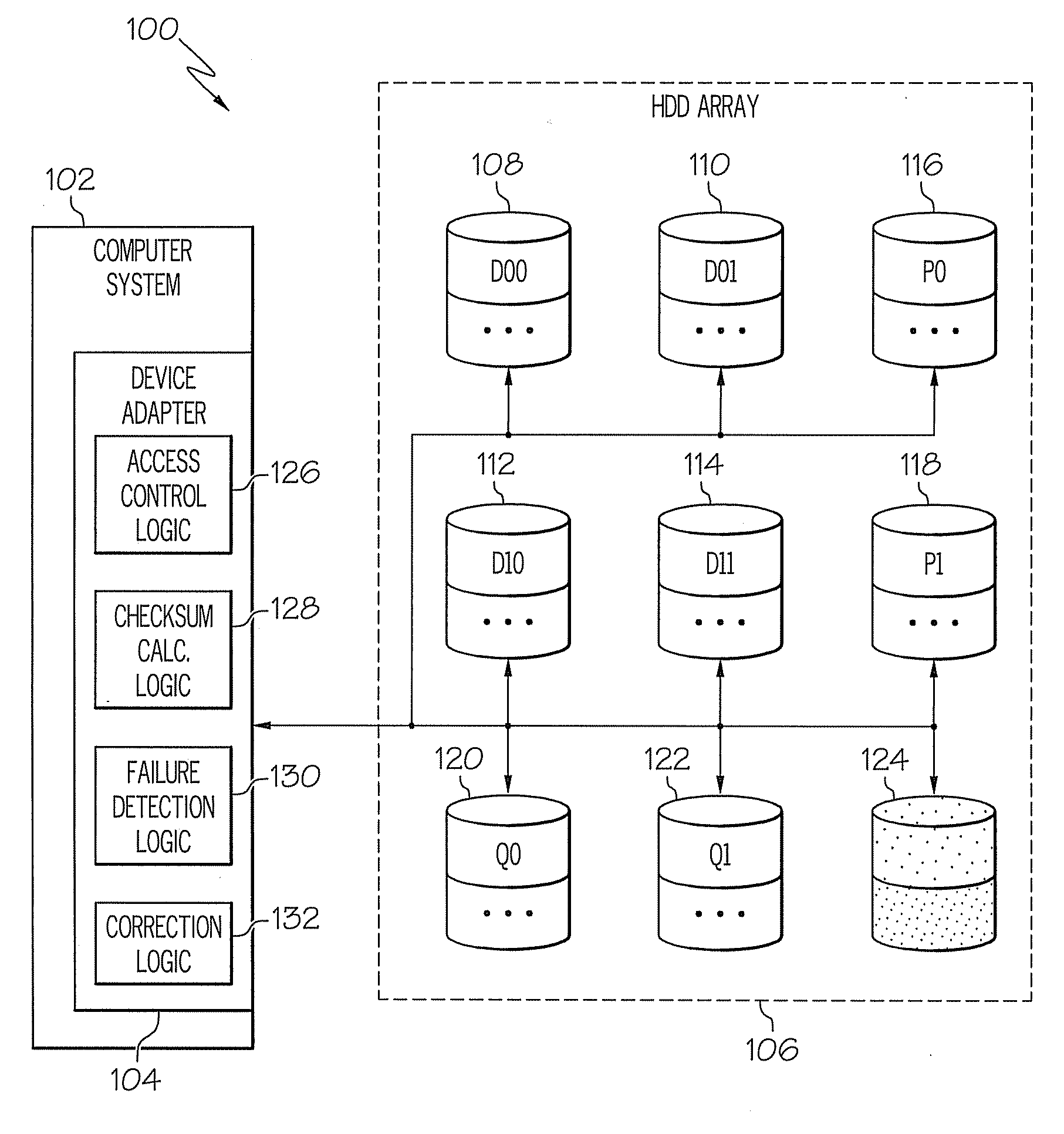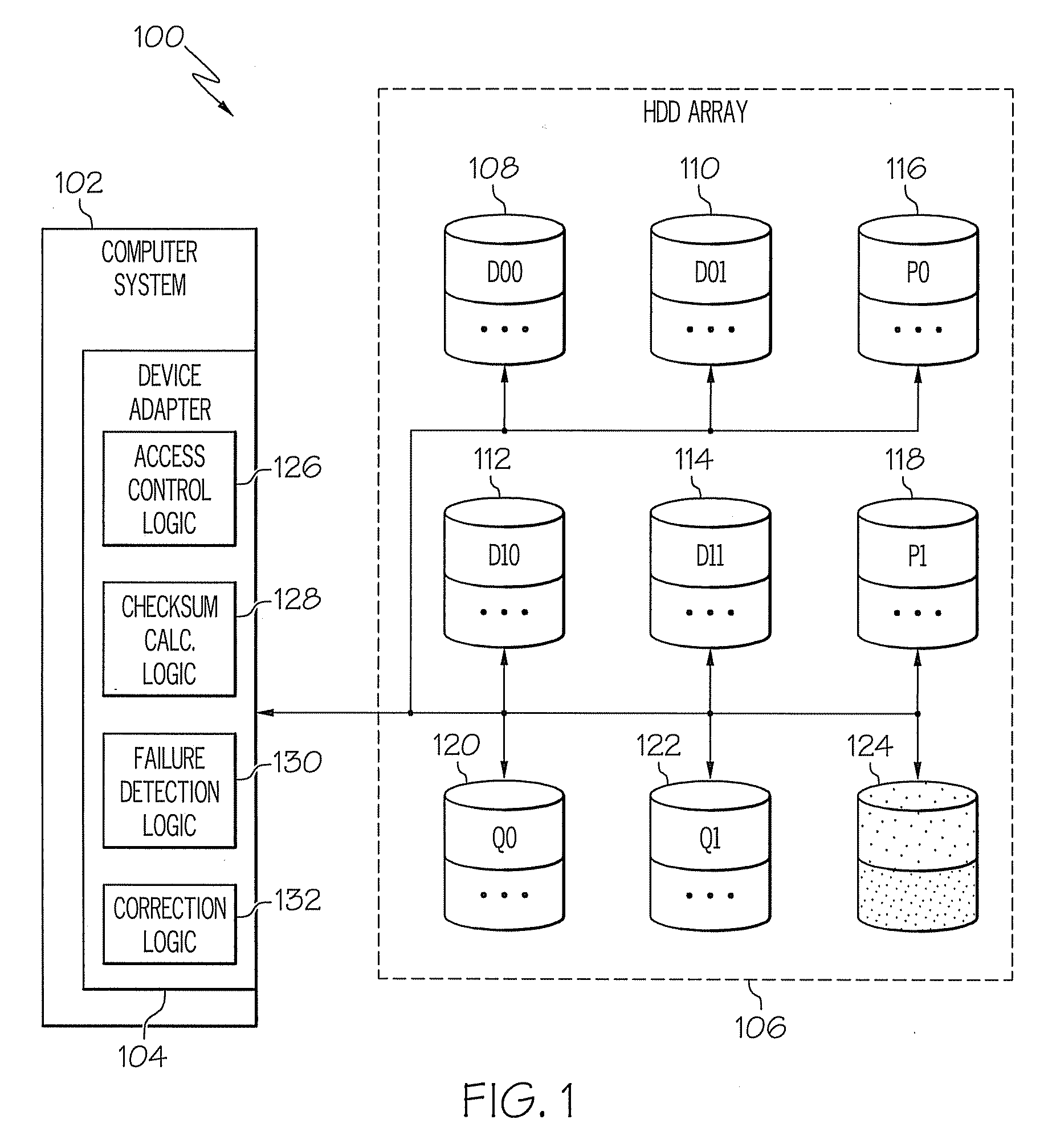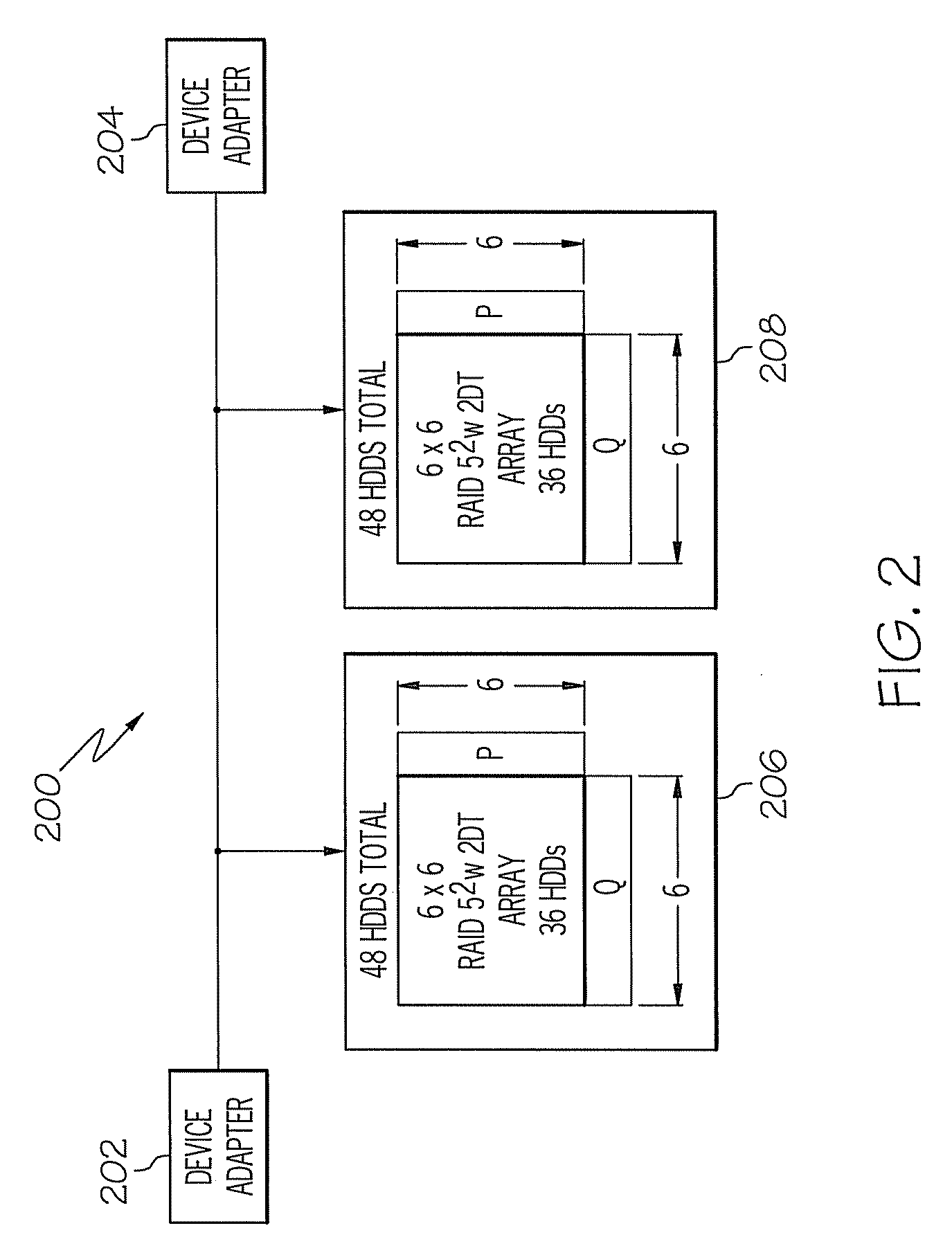Providing enhanced tolerance of data loss in a disk array system
a technology of disk array system and enhanced tolerance, which is applied in the field of disk array system, can solve the problems of system failure, large amount of nonvolatile disk storage, and loss of data, and achieve the effect of enhancing tolerance to data loss
- Summary
- Abstract
- Description
- Claims
- Application Information
AI Technical Summary
Benefits of technology
Problems solved by technology
Method used
Image
Examples
Embodiment Construction
[0035]Exemplary embodiments, as shown and described by the various FIGs. and the accompanying text, provide systems, methods, and computer program products for providing enhanced tolerance of data loss in a disk array system. Through the use of two-dimensional checksums across disks in a disk array system, an improved capability to withstand three hard disk drive (HDD) failures in the disk array system is provided. In exemplary embodiments, independent row and column checksums are produced through RAID 5-type exclusive-OR (XOR) operations upon data to produce independent checksums across data organized in rows and columns of HDDs in a disk array system. Thus, exemplary embodiments are referred to herein as “RAID 52” (RAID 5 Squared).
[0036]Turning now to the drawings in greater detail, it will be seen that in FIG. 1 there is a block diagram of a system 100 upon which enhanced tolerance of data loss in a disk array system can be implemented in accordance with exemplary embodiments. Th...
PUM
 Login to View More
Login to View More Abstract
Description
Claims
Application Information
 Login to View More
Login to View More - R&D
- Intellectual Property
- Life Sciences
- Materials
- Tech Scout
- Unparalleled Data Quality
- Higher Quality Content
- 60% Fewer Hallucinations
Browse by: Latest US Patents, China's latest patents, Technical Efficacy Thesaurus, Application Domain, Technology Topic, Popular Technical Reports.
© 2025 PatSnap. All rights reserved.Legal|Privacy policy|Modern Slavery Act Transparency Statement|Sitemap|About US| Contact US: help@patsnap.com



